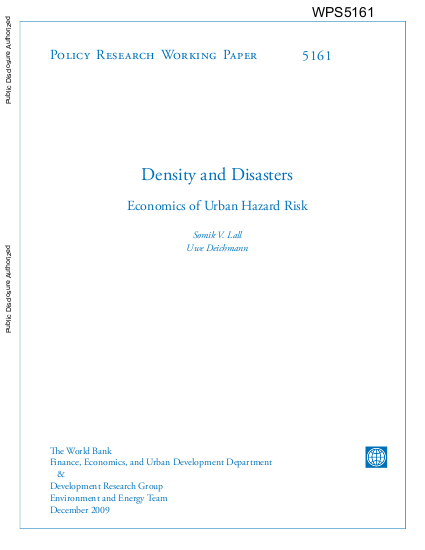
How can public policy help manage risks from natural hazards in urban areas? The focus of this paper is on ex-ante preventive measures. People and firms are attracted to cities to benefit from economies of scale and agglomeration, reflected in higher wages and productivity. Institutions that govern the use and transfer of land facilitate higher economic densities and influence development in hazardous locations. Ensuring that urban public services are adequate and infrastructure well maintained can generate welfare gains to the local population while reducing their risk from day to day hazards. Large scale investments designed specifically for disaster mitigation need to consider economic efficiency as well as distributional effects. While institutional weakness and land market distortions may lead to the development of informal settlements in hazardous locations, disaster risk reduction strategies should not end up being disruptive for the livelihoods of poor people. What is required is a combination of carrots, such as improved plots in safer areas with affordable transport that links distant locations to jobs, and sticks, including enforcement of land use and zoning to discourage the spread of informal developments in risky locations.
Resource collections
- UN Habitat - Urban Response Collection
- Urban Response - Urban Crisis Preparedness and Risk Reduction
- Urban Response Collection - Community Engagement and Social Cohesion
- Urban Response Collection - Economic Recovery
- Urban Response Collection - Environment and Climate Change
- Urban Response Collection - Housing, Land and Property
- Urban Response Collection - Urban Crisis Response, Recovery and Reconstruction
- Urban Response Collection - Urban Resilience